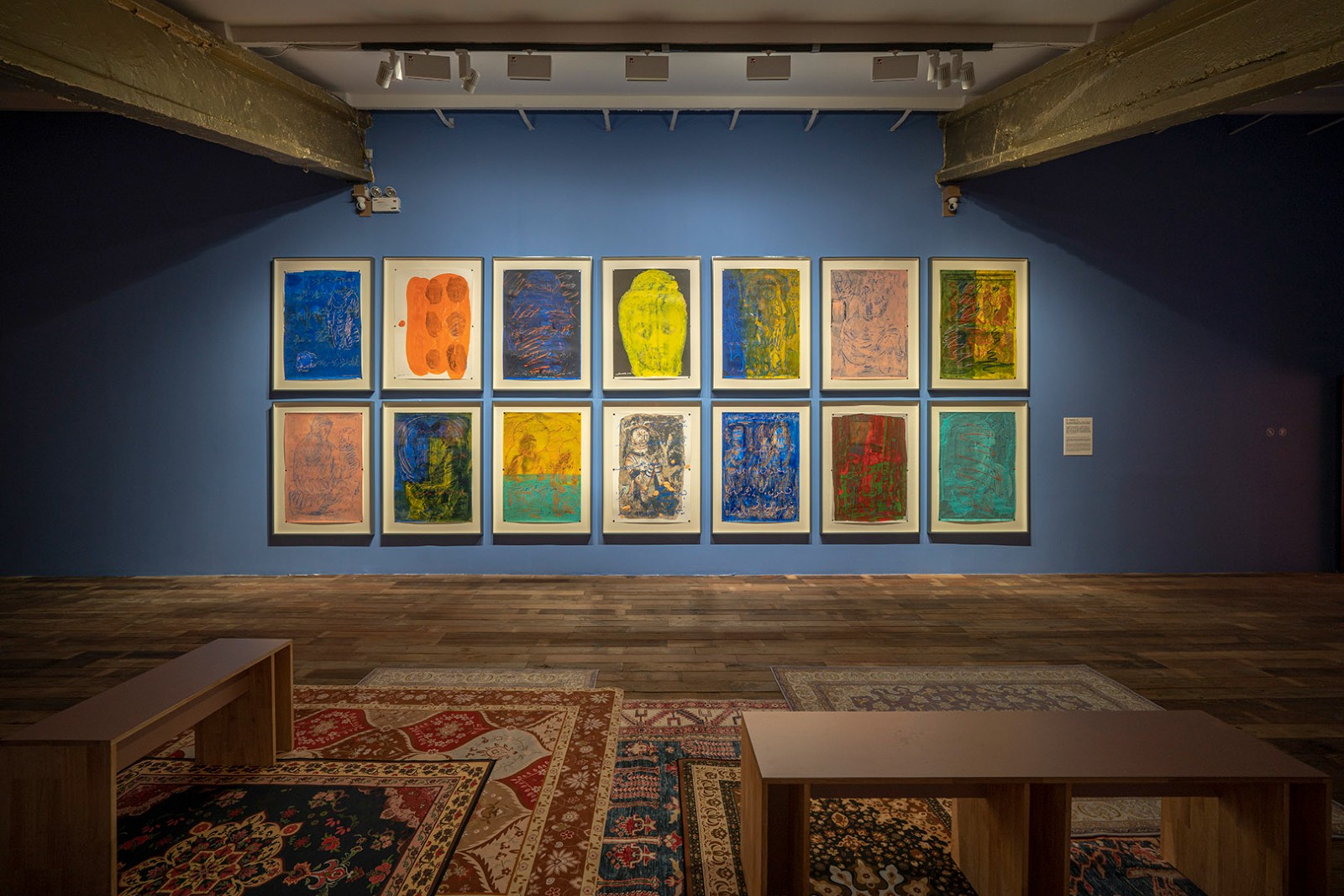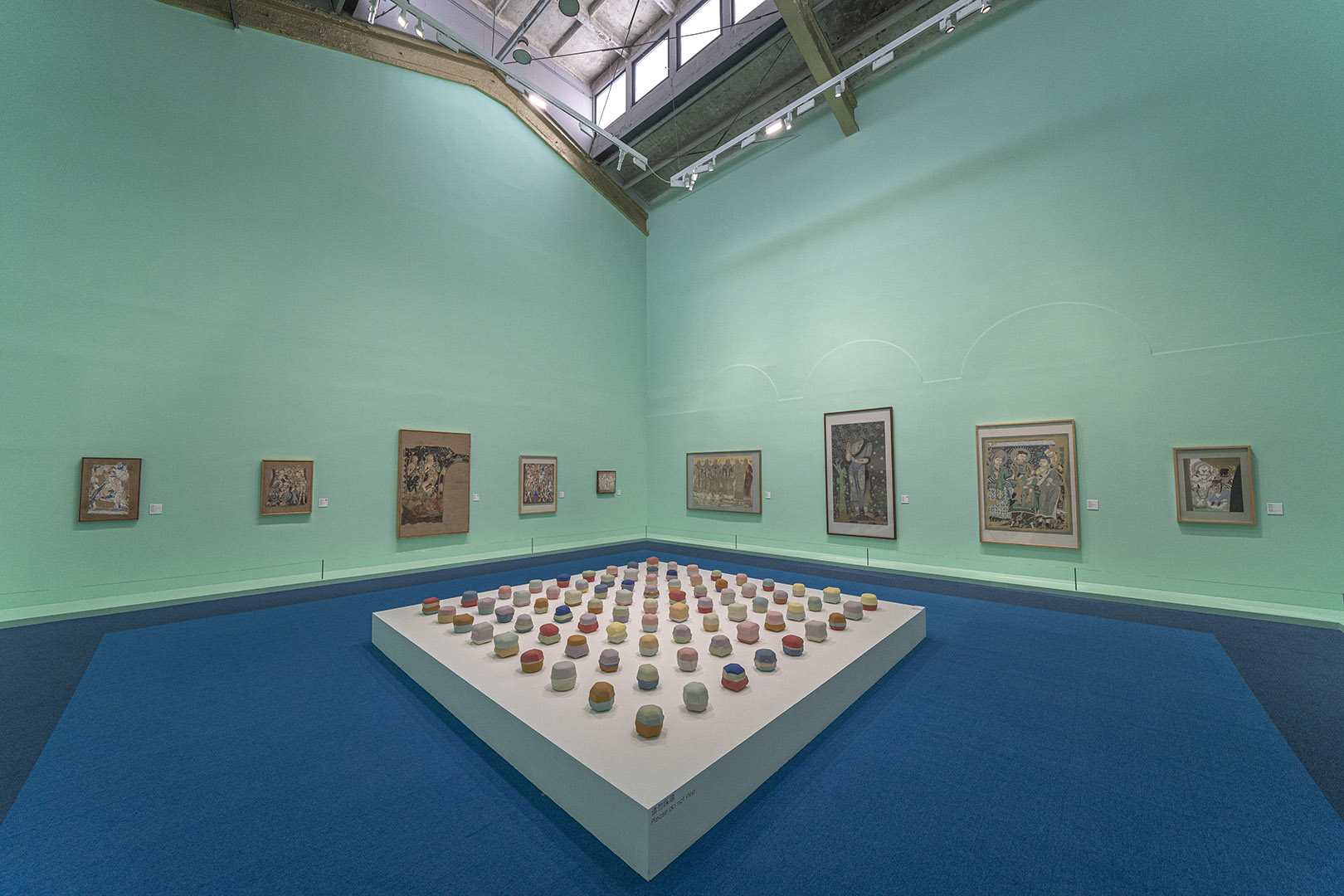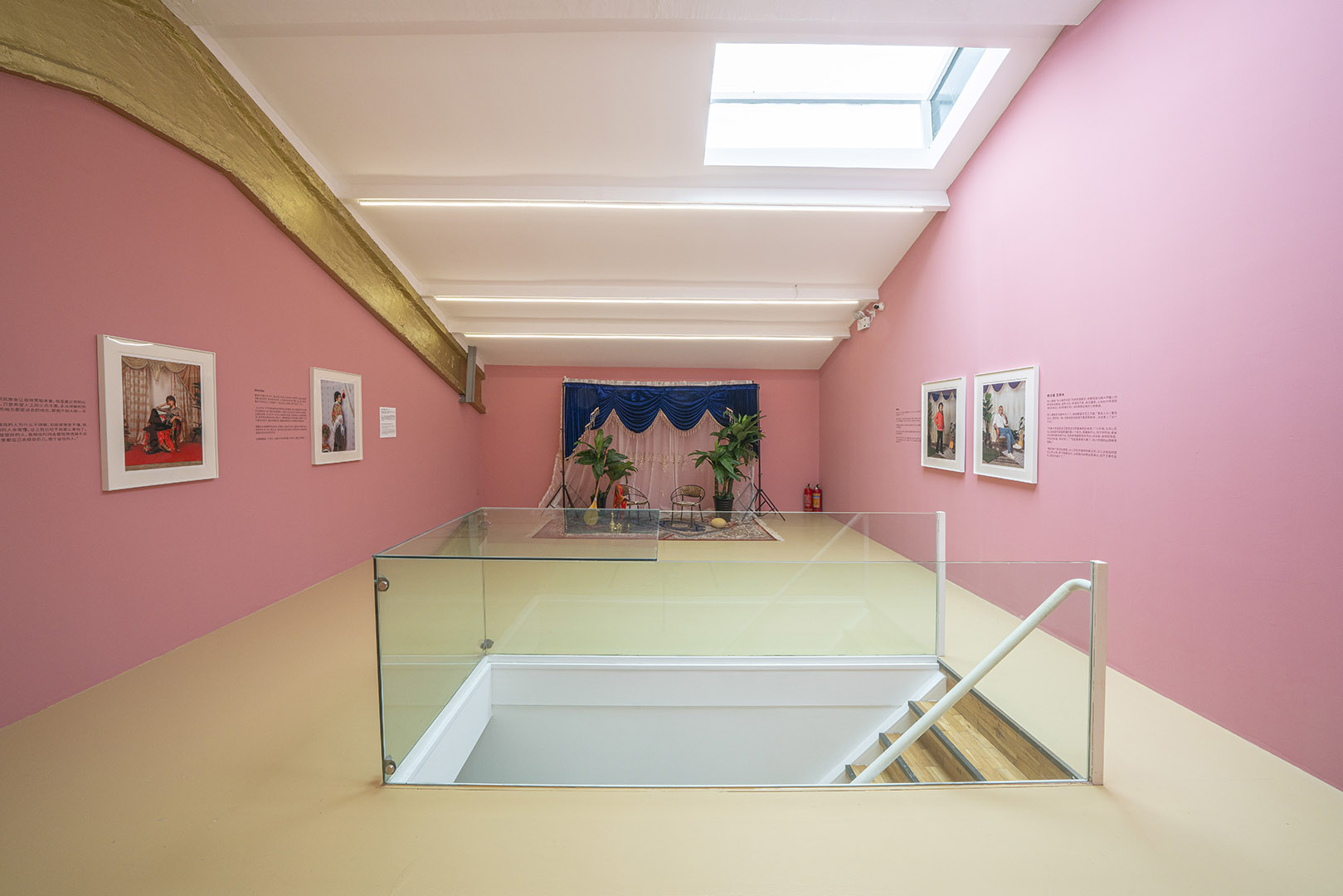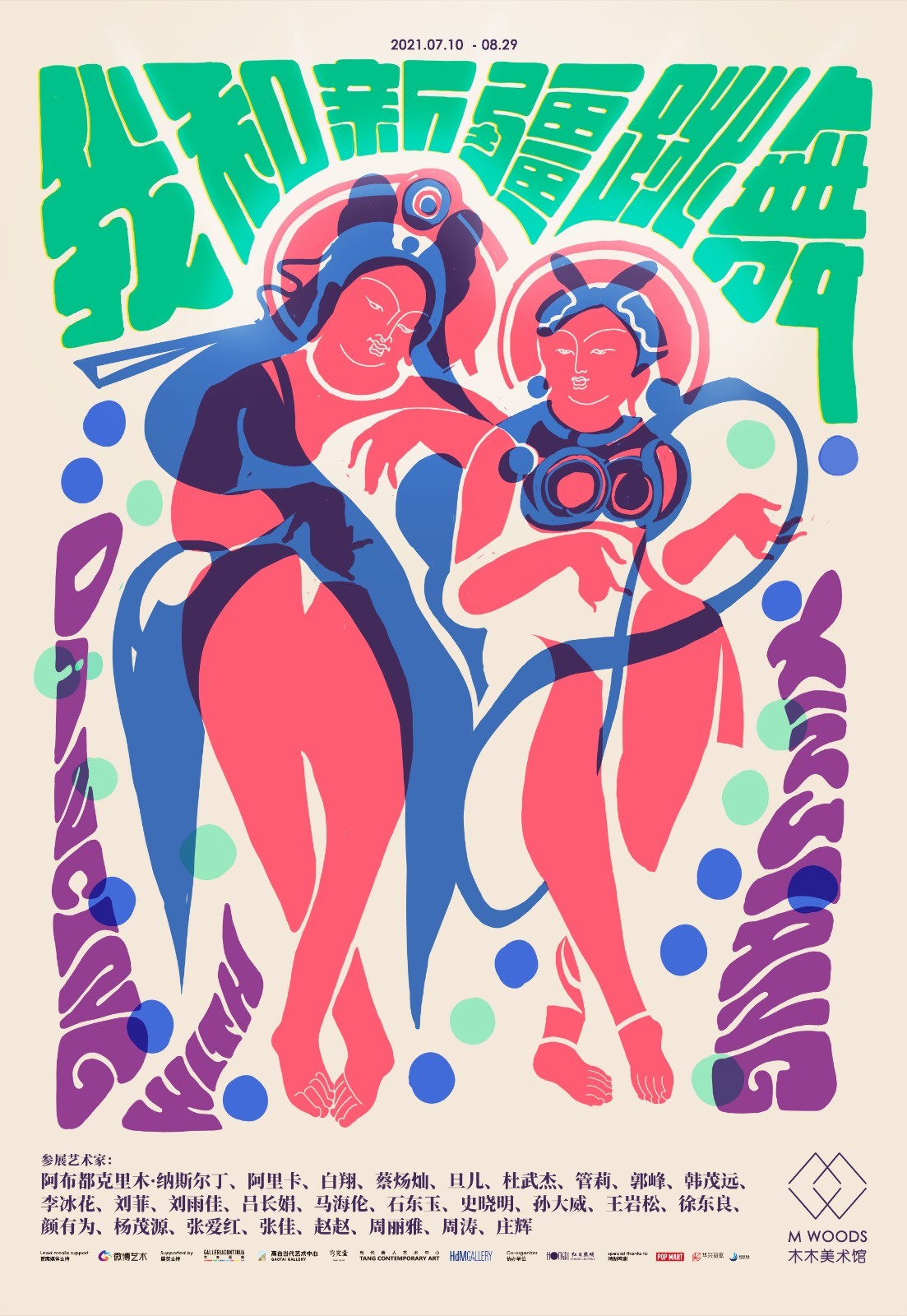 Exhibition View
Exhibition View
Located in the heart of the Eurasian continent, Xinjiang was an important corridor along the ancient Silk Road, which spanned from China's ancient capital Chang 'an to the eastern coast of the Mediterranean Sea. Through the ages, Xinjiang has been a place of convergence and exchange among Western and Oriental civilizations. Diverse cultures gather here, forming a grandiose ‘dance’ of great historical significance. For thousands of years, painters, artisans, musicians, dancers, and scholars, generation after generation, formed the exuberance of ancient Xinjiang arts and cultures. Their names may have been obscured by the oblivion of history, yet the lustrous colours, vivid figures, and graceful melody and postures survive in material forms, which still move and inspire people today. While contemplating the splendid past, contemporary artists also have their eyes on the current development of Xinjiang.
 Exhibition View
Exhibition View
The exhibition themed on “Dancing with Xinjiang”presents Xinjiang mural copies and original works made by over ten contemporary artists, in addition to original pieces of ancient Xinjiang art from the M WOODS collection. The exhibition aims to explore how the histories and cultures of Xinjiang, in conjunction with its current society, shape the course of development of contemporary art in China. It puts under the spotlight multidimensional discourses on Xinjiang formulated by artists and institutions over the years.
 Exhibition View
Exhibition View
From a contemporary standpoint, this exhibition sets out to examine, reflect on, and respond to Xinjiang’s past and present from various perspectives. Artists have explored and studied ancient Xinjiang art through the means of murals. Some of them have spent decades copying in caves, while others have traveled the world searching for ancient murals lost overseas. The mural copies are not simple reproductions but are born out of the copyist’s individual subjectivity, infused with personal emotions and creative interpretation. The various copying methods chosen by researchers also reflect the shifts in thinking and practice in Xinjiang grotto mural conservation across time.
 Exhibition View
Exhibition View
Other artists incorporate their observations and thoughts on the region into their artistic creation. Their works either offer a re-examination of Xinjiang’s historical memories and cultural traditions or strip away all relevant contexts to draw inspiration from purely aesthetic and formal dimensions. Other works focus on the current social climate of Xinjiang through in-depth examination of the individuals living in it. These contemporary works are spatially and conceptually juxtaposed with the mural copies in the gallery, making possible a dialogue across spacetime between ancient Xinjiang art and contemporary practices.
 Exhibition View
Exhibition View
Art institutions play an important role in this vibrant “dance”. The exhibition explores the role and value of museums nowadays in the preservation, conservation, and propagation of artistic and cultural heritage: while dedicated to collecting, researching, and exhibiting cultural relics, M WOODS builds a platform for communication and exchange to materialise the continuance and resonance of history in contemporary art through looking back into the past.
About the exhibition
 Dates: Jul 10, 2021 - Aug 29, 2021
Dates: Jul 10, 2021 - Aug 29, 2021
Venue: M WOODS 798
Courtesy of the artists and M WOODS 798.




























